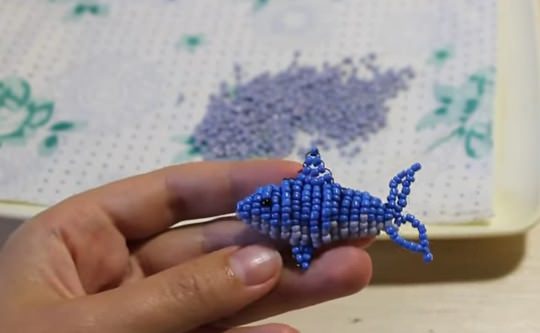
Clover from beads: weaving of a flower and a shamrock
Content
On our site there are a lot of master classes,Devoted to weaving a variety of colors from beads. In this lesson we will consider the creation of a clover with shamrocks and flowers with the help of three simple techniques: loop, needle and parallel weaving techniques.


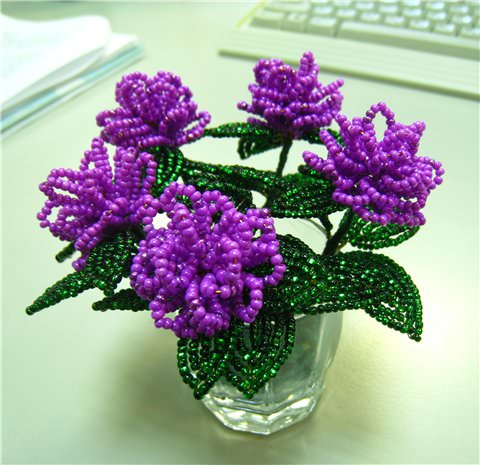

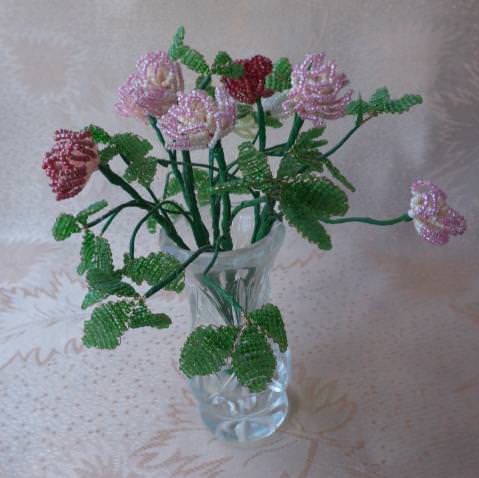
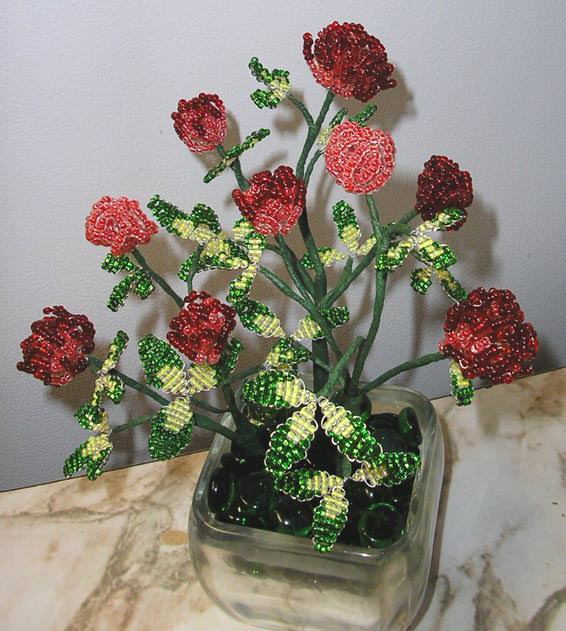
Master class of weaving flowers and leaves of clover
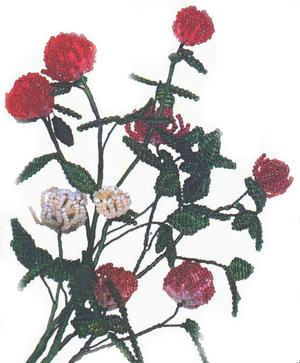
Necessary materials for weaving:
- Beads of pink color (light and dark shades);
- Beads of green color (light and dark shades);
- Wire for beadwork.
For weaving flowers you can pick up beads of a different color. It will be interesting to look, for example a combination of red and white.
We begin the weaving with the creation of the first flower of clover from beads. In total for its manufacture we will need to weave four levels of beaded lobes.
For weaving the first level, take a pieceThe wires are about forty centimeters long. At one of the ends of the wire, we collect pink beads in such quantity: 5 beads of light shade, 5 - dark and 4-light. We place beads in the center of the wire. Next, take one of its tips and pass it to the very first of the dialed beads. Thus, we need to form similar loops at both ends of the wire. Total of these loops on this piece of wire is three pieces. The ends of the wire must be twisted together into several turns.
We proceed to the weaving of the next level. To do this, we take a piece of wire of the same length as in the first case and type on it the following sequence of pink beads: 6 beads of light shade, 7 - dark and 5 - light. We move the low to the center of the wire segment and pass the tip of the wire into the first of the strung beads. Further, already known to us, we form similar loops at both ends of the wire. The total number of loops on the wire is three pieces. The ends of the wire are twisted together for a couple of turns.
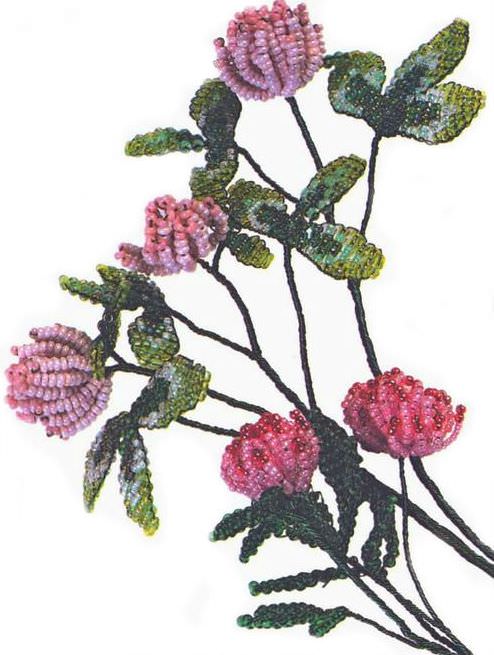
The creation of the third level is similar to the previous one, except for the number of dark beads strung on a wire of dark beads on 2 pieces on each of the petals in the form of a loop.
For weaving the fourth level, we prepareThe wire is eighty centimeters long. We type on it pink beads in this order: 5 beads of light shade and 5 - dark. We place the low in the center and, passing the last of the dialed beads, pass the end of the wire through the rest. Thus, we have a petal in the form of a needle. On both sides of this central needle, create seven similar petals. Total, on this wire segment we have 15 needles.
Let's proceed to assembling the clover from the beads. To do this, you need to slightly bend the ends of the petals in the form of loops in the middle of the flower. Next, 3 levels of petals should be placed one below the other, beginning with the first level, which will be in the middle. Thus, we get the first bud of a blossoming clover from beads.
The clover flower itself is formed with the addition of a fourth level of petals in the form of needles. The ends of the wire under the resulting colors must be twisted together for a couple of centimeters.
To create leaves of clover from beads in the form of trefoils, the technique of parallel weaving is used. The production of all leaflets takes place on individual wire segments.
Using the following schemes of plaiting the leaves of different sizes of beads, combining beads of green color in different shades:
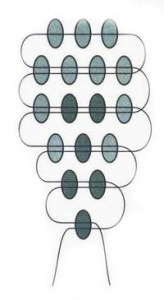
The scheme of weaving a small leaf 
The scheme of weaving the middle sheet 
Weaving scheme for a large leaf Weaving oneA small leaf occurs on a piece of wire thirty-five centimeters in length, two medium leaves - on a segment of forty centimeters and two large - on the segment - fifty centimeters.
Woven billets are fastened to the flower. Shamrock of the smallest size is attached in the space of one centimeter from the base of the flower. Following it, it is necessary to twist the wire and screw the remaining pieces of trefoils, increasing the distance between them from two to four centimeters.




